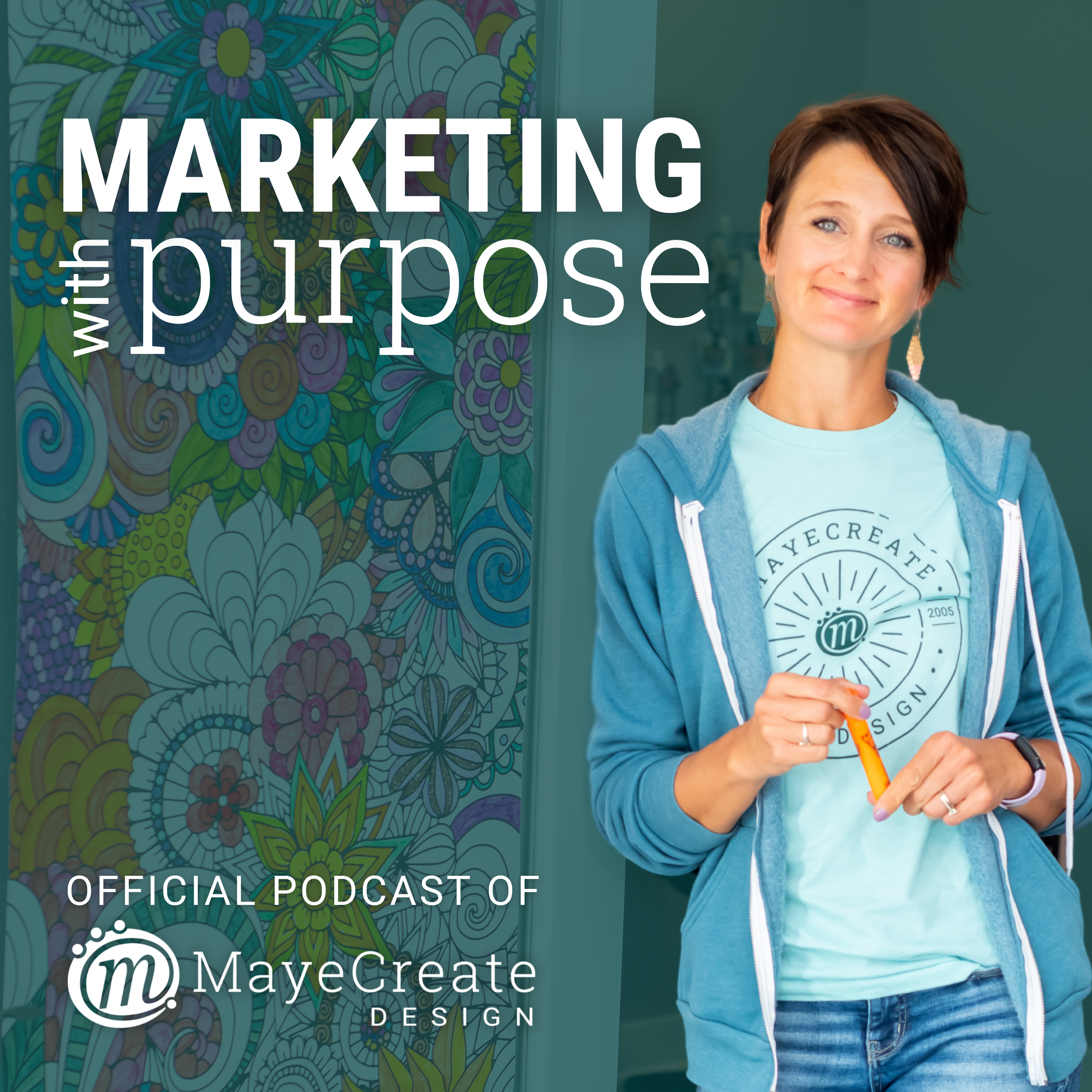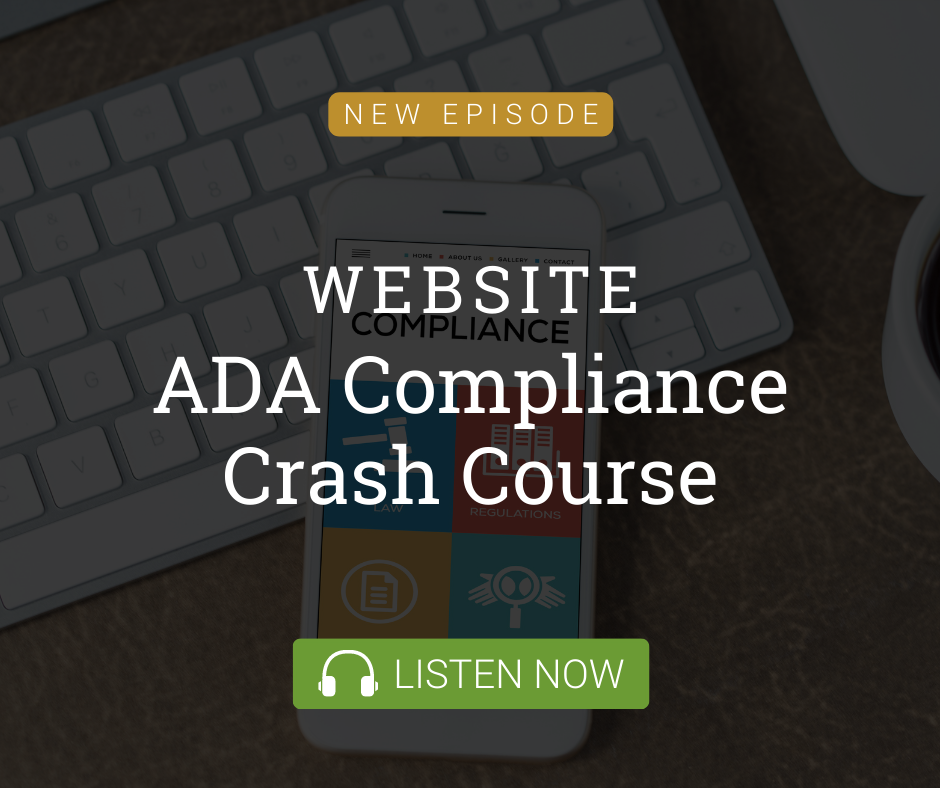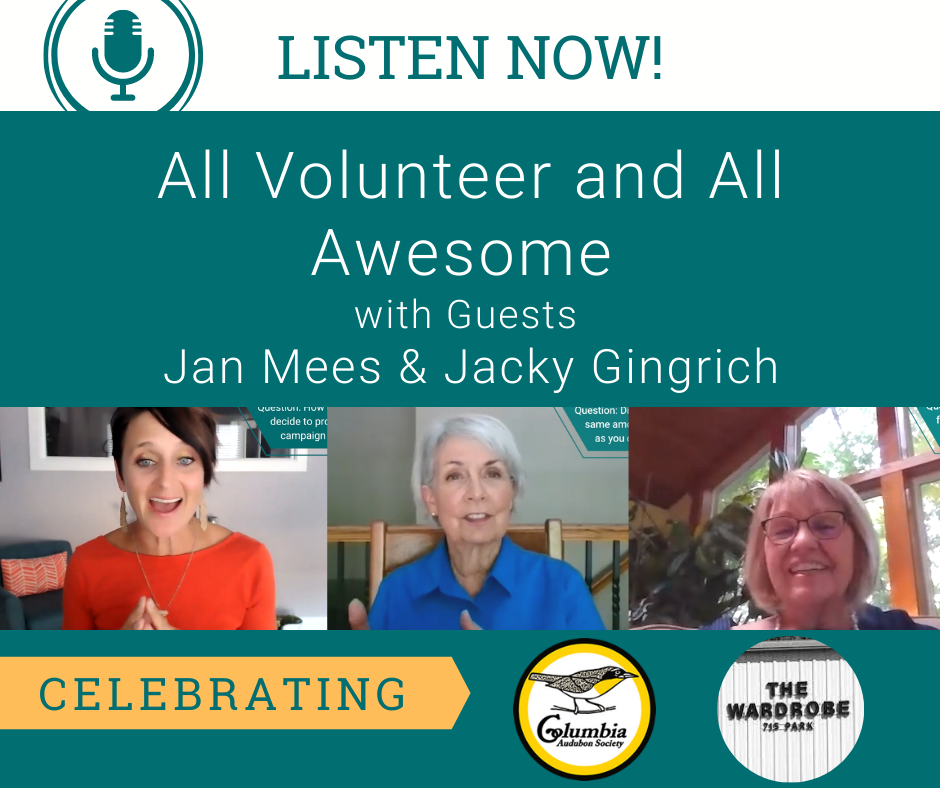Episode Transcript
Monica Pitts 00:00
This may seem just a teensy bit over the top for me, but I have to do a public service announcement letting you know that your PDFs are probably breaking the law right now — but not in a dramatic FBI-busting-down-your-door sort of way. It’s more like a quietly excluding people who need your information kind of way. Because, well, things have changed, my friends.
That innocent-looking PDF sitting on your website — the one you probably uploaded because it was way easier than actually editing your website — it’s not just considered a digital piece of paper anymore, and it hasn’t been for quite some time. It’s like a mini website that needs to work for everyone, including people who are using screen readers, keyboard navigation, and other assistive technologies.
If you’re like most people, you’ve probably been creating your PDFs the same way since 2005. And that’s okay — I was one of those people too. You were just blissfully unaware that there are actually rules about this stuff now. I’m sorry to ruin those carefree PDF-uploading days forever, but in this episode, you’re going to learn how to fix it without losing your mind.
I’m Monica Pitts — welcome back to Marketing with Purpose. Let’s talk about how to make ADA-compliant PDFs (and why). Let’s get to business.
You’re on a mission, and you just need more people to know about it. Whether you’re brand new to marketing or a seasoned pro, we’re all looking for answers to make marketing decisions with purpose. I’m a techie, crafty business owner, mom, and aerial dancer who solves communication challenges through technology. This podcast is all about digging in and going digital.
I’ll share my marketing know-how and business experience from almost 20 years of misadventures. I’ll be your backup dancer so you can stop doubting and start moving toward marketing with purpose.
Usually, you’d hear a sponsor thank-you here, but today I don’t have a downloadable resource for you. Instead, I made some videos that show you step-by-step how to make an ADA-compliant and fully accessible PDF using Microsoft Word and Google Docs, and how to validate them using Adobe Acrobat Pro and a free downloadable program called PAC. You’ll also get tips and tricks on how to remediate those PDFs — no email required.
Head over to mayecreate.com — these videos and step-by-step instructions with screenshots are available right inside the MayeCreate blog. If they’re not at the top, just search “ADA,” and they’ll pop right up for you.
Okay, so now let’s really get to business. The rules have changed about PDFs. You can’t just export them from Word and throw them on your website anymore. The government decided that digital documents need to work for everyone — not just people who can see perfectly or use a mouse easily.
And that’s not a bad thing. Why wouldn’t you want everyone to be able to use your website? About 26% of adults in the U.S. have some type of disability. That’s a lot of people who might want to read your content, buy your products, or donate to your cause.
So excluding them isn’t just legally risky — it’s also not a great way to treat people.
These new rules from the Department of Justice under the ADA (specifically enforcing Title II) say that PDFs linked from your website need to work for people who use screen readers, keyboard navigation, and rely on document structure.
And no, your current PDFs probably don’t do all that. I’ve run a lot of tests — trust me, most don’t.
So what makes a PDF compliant? In a nutshell, an ADA-compliant PDF allows a screen reader to navigate it just as easily as a sighted person could read it visually. Think of it like building a website — everything needs proper structure, labels, and organization.
Structure and Tags
Your PDF needs proper tags and structure — basically HTML for PDFs. Every meaningful element must be inside a tag tree. You create this by using proper formatting in Word or Google Docs: headings (H1, H2, etc.), lists, and paragraphs. Don’t just bold or enlarge text to look like a heading — use the real heading tools.
Lists need to be real lists, not just icons or dashes. Tables should be used for data, not layouts. If you do use them for layout, let screen readers know and clearly define header rows.
Logical Order
Even with correct tagging, your content still needs to flow logically — top to bottom, left to right. If you have clickable elements like links or form fields, set the tab order so users navigating by keyboard move through the document naturally.
Images and Alt Text
All meaningful images need alt text — short descriptions read aloud by screen readers. For example, instead of “DCIM_1234.jpg,” use “Chart showing 30% increase in sales.” Think: How would I describe this to someone wearing a blindfold?
Decorative images (like borders or flourishes) can be marked as decorative so they’re skipped by screen readers. Both Word and Google Docs allow you to do this.
Designers — if you’re using Canva or putting text on top of images, that’s not ADA-compliant unless every word on the image is also written in the alt text. Best practice: avoid it if possible.
Links and Colors
All links should describe where they go. Instead of “Click here,” say “Download the 2024 Annual Report.”
Your text also needs sufficient contrast against the background. Some colors, like yellow, orange, and red, are hard to make compliant unless on a dark background. I recommend using WebAIM’s Color Contrast Checker to make sure your text meets standards.
Also, color can’t be the only way you convey information. Don’t say “Required fields are in red” — use an asterisk or another visual cue as well.
Document Properties
Lastly, make sure your document has set properties — a proper title, the correct language, etc. These need to be manually added in the document properties (especially in Word).
Testing and Validation
After creating and exporting your PDF with the right settings, run it through a checker. Microsoft Word and Google Docs have built-in accessibility checkers, but for full compliance, use Adobe Acrobat Pro or PAC (a free tool).
Remember, these checkers can’t tell if your content makes sense — they just check the technical parts. You still need to review your document for logic and usability.
Monica Pitts 19:09
If you’re the one making all these PDFs, it might feel overwhelming. Yes, it’s a little more work, especially at first, but once you get the hang of it, it’ll only take a few extra minutes per PDF.
The Department of Justice is mandating that all government entities (including schools and libraries) have ADA-compliant websites by April 2026–2027. That includes PDFs.
But don’t panic — archived documents and older PDFs can often be grandfathered in. Just make sure frequently used ones are compliant. You can use Google Analytics to see which PDFs get the most downloads and prioritize those.
Moving forward, create accessible PDFs from the start — future you will thank you.
The workflow:
Create your document properly (using headings, tags, lists, and alt text).
Export with accessibility settings on.
Run an automated checker for obvious issues.
Do a manual review for logic and usability.
Fix issues in your source file (Word or Docs).
Re-export and recheck.
Once you learn the workflow, it becomes second nature — like learning to parallel park. Terrifying at first, easy after practice.
If you want step-by-step help, visit our blog at mayecreate.com for videos and screenshots that walk you through the entire process. Everyone at our company uses these resources, and now I’m sharing them with you.
Start with your next PDF — not your entire library. Make it an adventure! Future you will thank you.
When you’re forced to organize content logically and describe your images, your documents become clearer and easier for everyone — not just people with disabilities.
Thank you so much for hanging out with me today. I hope this episode gave you tools to create awesome and inclusive PDFs.
If you enjoyed this episode or learned something new, subscribe — next time we’re talking about tricks to fix and stop website spam!
Until next time, go forth and market with purpose.


